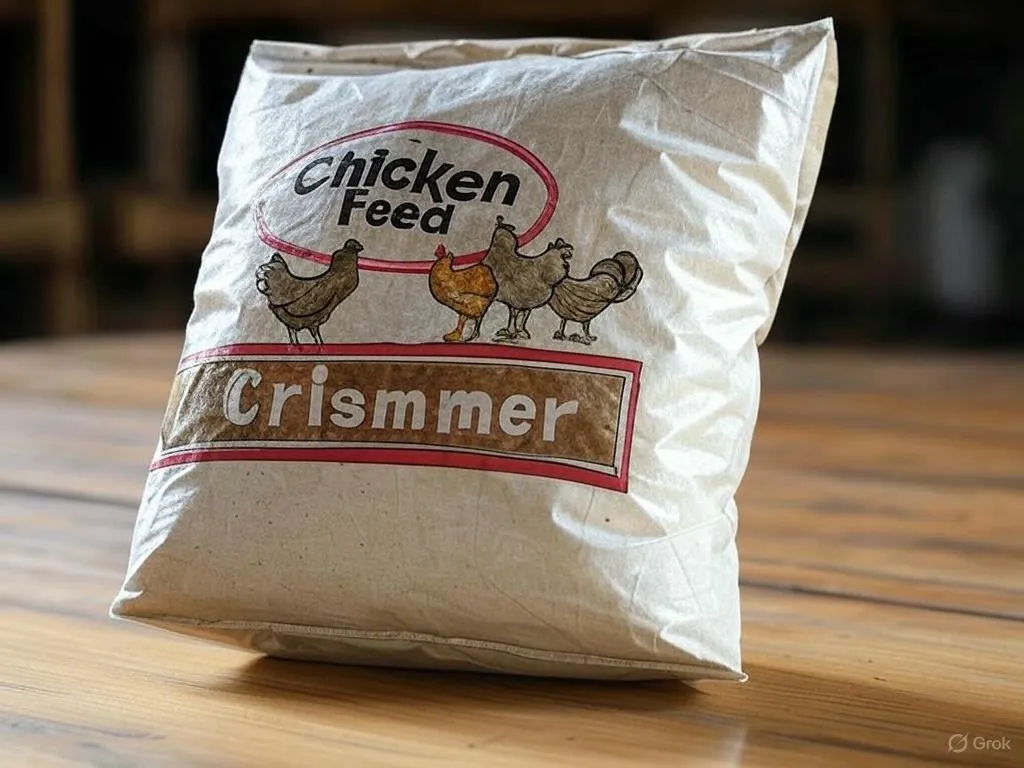
How Long Does a 50 lb Bag of Chicken Feed Last?
How Long Does a 50 lbs Bag of Chicken Feed Last? (And What It Really Costs to Feed 5 Chickens a Year)
The first time I ran out of chicken feed faster than expected, I assumed it was a mistake.
I had just brought home a 50-pound bag from the feed store, and yet, here I was, staring at the bottom of an empty feed bin.
It didn't make sense. I had a small flock—only five chickens. How could they have gone through it so quickly?
I remember standing there, doing rough math, trying to figure out if I had been overfeeding, wasting feed, or underestimating their appetite.
That was the moment I realized something: Feed costs aren't just about how much your chickens eat. They're about how well you manage what they eat.
It was a lesson learned the hard way—feed costs can spiral out of control if you're not paying attention. Underestimating consumption is one of the biggest mistakes backyard chicken keepers make.
So, let's break it down: How long does a 50-pound bag of feed really last? And what does it actually cost to feed five chickens for a year?
How Long Does a 50-Pound Bag of Chicken Feed Last?
I used to think that as long as I kept the feeder full, my chickens would pace themselves—eating only what they needed when needed.
But I was wrong.
Chickens don't self-regulate. They'll eat more than necessary, spill a good portion, and scratch even more into the dirt.
That's why the real answer to how long a bag of feed lasts depends on more than just the number of chickens you have—it's about how much they eat per day and how much is wasted in the process.
A laying hen eats about a quarter-pound of feed per day. That means a 50-pound bag contains about 200 daily servings for a single hen.
That same bag lasts about 40 days for five chickens—just under six weeks.
If I had known that from the start, I would have realized that a single bag wouldn't last nearly as long as I had assumed. Instead of stocking up every few months, I would need to plan for regular feed purchases every six weeks.
And for meat birds? They eat twice as much as layers, meaning a flock of five could wipe out a 50-pound bag in just 20 days.
That's when I started asking a bigger question: How much does keeping chickens cost?
The Real Cost of Feeding 5 Chickens for a Year
Once I realized how quickly my birds were using up feed, I realized that understanding consumption was only half the equation.
Feed is the biggest recurring cost in keeping chickens; you'll spend more than expected if you don't plan for it.
A flock of five laying hens eats about 1.25 pounds of feed per day, which adds up to 8.75 pounds per week and around 455 pounds per year.
That means I would go through about 9 bags of feed annually.
At $15 per bag for conventional layer feed, that adds up to about $135 per year.
If I opted for organic or non-GMO feed at $30 per bag, that cost would double to $270 per year.
At first, that didn't seem too bad. A few dollars a week for fresh eggs? Fair trade.
But then I realized that the cost of feed isn't just the price per bag—it's about how efficiently that feed is being used.
And that's when I made a critical discovery: If you don't control waste, you're ppending far more than you think.
Why Some People Spend Twice as Much on Feed Without Realizing It
It's not just about how much feed chickens eat—it's about how much gets lost along the way.
There are three common reasons most backyard keepers overspend on feed:
Waste from poor feeding methods.
If chickens can kick feed onto the ground, they will. Once it's mixed with dirt or bedding, it's gone.
Unnecessary seasonal overfeeding.
Chickens eat more in winter when they aren't foraging, but if you don't adjust in summer, you could feed more than necessary.
The hidden cost of "extras."
Scratch grains, mealworms, and supplemental feeds add up quickly—and most people don't realize how much they're spending.
Once I identified these inefficiencies, I started looking for ways to feed my flock smarter without sacrificing nutrition.
The Strategy That Cuts Feed Costs Without Cutting Nutrition
The turning point came when I stopped focusing on how much feed I was buying and instead started focusing on how I was feeding my chickens.
A few simple changes could drastically improve efficiency.
Once I applied this new approach, I noticed three things:
My feed lasted longer.
My chickens were healthier.
I was spending significantly less per year.
What changed?
It wasn't about buying cheaper feed or cutting back on nutrition. It was about managing their diet to reduce waste and maximize efficiency.
Once I implemented this approach, my annual feed cost dropped by nearly a third, without sacrificing egg production or bird health.
The best part? These changes didn't require spending more money—just a smarter way of feeding.
What I Wish I Had Known About Feeding Chickens Sooner
I used to think buying feed was just part of the deal—something you had to accept as an ongoing expense.
But I learned how you manage feed is as important as how much you buy.
Most people assume that feed costs are fixed—but they're not. Small changes in efficiency can reduce expenses without cutting nutrition.
If you're keeping five chickens for eggs, expect to go through 9 bags per year and spend somewhere between $135-$270 annually on feed.
But if you learn how to feed more efficiently, you can cut that cost significantly—all while keeping your flock healthier.
Because at the end of the day, raising chickens isn't just about keeping them fed.
It's about feeding them wisely.
"Those who control the seed, control the world. But what if you could take that control back?"
For too long, the industrial food system has dictated how we grow, what we feed, and even what we’re allowed to farm. But the key to food sovereignty isn’t in fighting the system—it’s in building something better.
The Lost Chapter is the blueprint for doing just that. It reveals how sprouting, hatching, and regenerative farming work together to create self-sustaining food systems—systems that put control back into your hands, not in the hands of corporations.
This isn’t just a chapter—it’s the first step toward designing your own future.
Download it today and start breaking free.
[Get Your Free Chapter Here]
